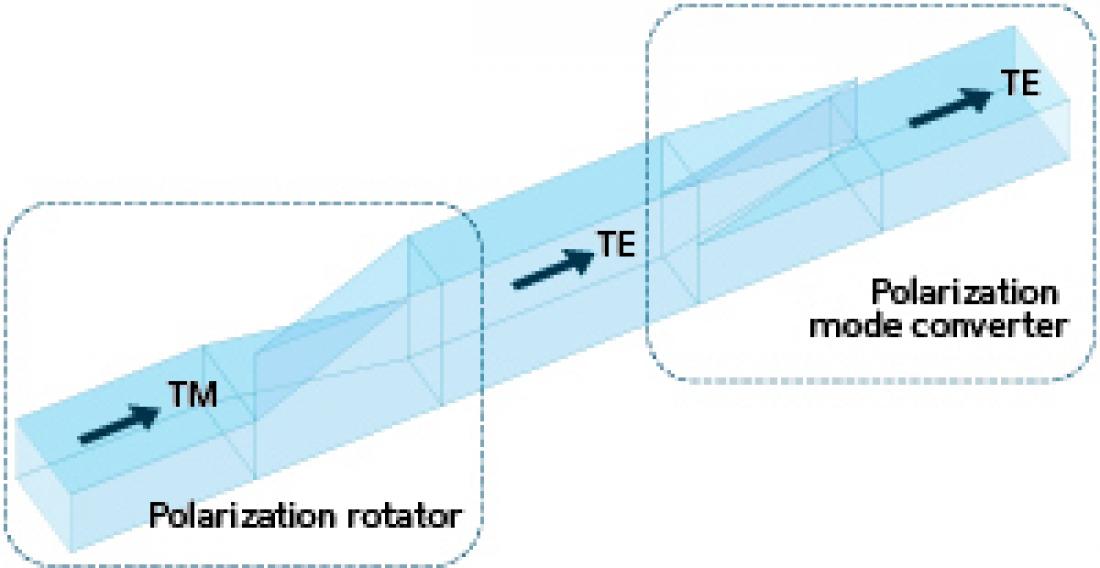A schematic diagram of a combined polarization rotator and mode converter provides mode conversion to reduce propagation loss in the waveguide while retaining the original polarization state
Silicon is the dominant material for the fabrication of integrated circuits and is also becoming a popular material for making photonics circuits—miniaturized circuits that use light instead of electronic signals for processing information. One of the challenges in the field, however, has been silicon’s intrinsic sensitivity to the polarization of light, which can limit the rate of information transmission. Jing Zhang, Tsung-Yang Liow and co-workers at the A*STAR Institute of Microelectronics have now developed a novel solution to this problem[1].
Light of different polarizations, which normally travel at the same speed in air, travel at different speeds in silicon waveguides due to random imperfections and asymmetries in the silicon itself. To overcome this problem, the researchers turned to a scheme known as ‘polarization diversity’, by which incoming light is split into two perpendicular modes of polarization, called the transverse electric (TE) and transverse magnetic (TM) modes. They then rotated the TM mode by 90° so that both of the modes propagate in parallel at the same speed inside the photonic circuit.
Zhang, Liow and their co-workers had previously demonstrated a silicon-based device, called a polarization rotator, which comprises the first half of the diversity scheme (see image). The rotator transforms TM light into TE light by passing the light through a horizontal waveguide and then rotating it into a vertical waveguide. In their present work, they designed, built and characterized a device that completes the second half of the scheme. Called a polarization mode converter, it transforms TE light in the vertical waveguide into TE light in a horizontal waveguide. By connecting their mode converter to their rotator, the researchers were able to construct a polarization diversity scheme that provides mode conversion to reduce propagation loss in the waveguide while retaining the original polarization state.
Both halves of the polarization rotation device work by gradually changing the geometry of the waveguide, which in turn changes the polarization mode of the light it is guiding. The Singapore research team characterized their devices by studying the signal loss introduced over the transition length between polarization modes, as well as the propagation loss in the rest of the device. They found that the device efficiencies would need to be improved to be practical, for example by reducing the roughness of the waveguide walls through thermal oxidation, and by improving the coupling between the waveguide and the fiber optic cable connected to it.
The A*STAR-affiliated researchers contributing to this research are from the Institute of Microelectronics



